Using data from TESS, a new paper presents evidence for the discovery of thirty potential comets orbiting in the Beta Pictoris system. Plus, astrobiology research, water on the Moon, solar system formation, and a review of “The Adam Project” starring Ryan Reynolds.
Podcast
Show Notes
JWST finishes its telescope alignment phase
Genetic blueprint pieces found in asteroids
- NASA press release
- All of the bases in DNA and RNA have now been found in meteorites (Science News)
- “Identifying the wide diversity of extraterrestrial purine and pyrimidine nucleobases in carbonaceous meteorites,” Yasuhiro Oba et al., 2022 April 26, Nature Communications
Methanogens in the Middle East
- ASU press release
- “Energetically Informed Niche Models of Hydrogenotrophs Detected in Sediments of Serpentinized Fluids of the Samail Ophiolite of Oman,” Alta E. G. Howells et al., 2022 February 27, JGR Biogeosciences
Water on the Moon from the Earth
- University of Alaska Fairbanks press release
- “Distribution of water phase near the poles of the Moon from gravity aspects,” Gunther Kletetshka et al., 2022 March 16, Scientific Reports
Thirty comets spotted orbiting alien star
- CNRS press release
- “Exocomets size distribution in the 𝛽 Pictoris planetary system,” Alain Lecavelier des Etangs et al., 2022 April 28, Scientific Reports
Planet 9: Hammer-thrown by gravity to outer solar system
- MSU press release
- “Early Solar System instability triggered by dispersal of the gaseous disk,” Beibei Liu, Sean N. Raymond, and Seth A. Jacobson, 2022 April 27, Nature
Chinese rocket launches two satellites
- China launches two new satellites (Xinhua)
Transcript
This show is all about water ice, from how some got to the Moon from Earth to the discovery of exocomets.
And how we’ve found DNA and RNA bits in meteorites.
Plus we take a look at how our solar system formed.
And that one telescope finally passes all of its alignment steps.
Later in the show, Beth will be joining us for a review of Netflix’s The Adam Project.
All of this and more is coming at you, right here on the Daily Space.
I am your host Dr. Pamela Gay.
And I am your host Erik Madaus.
And we’re here to put science in your brain.
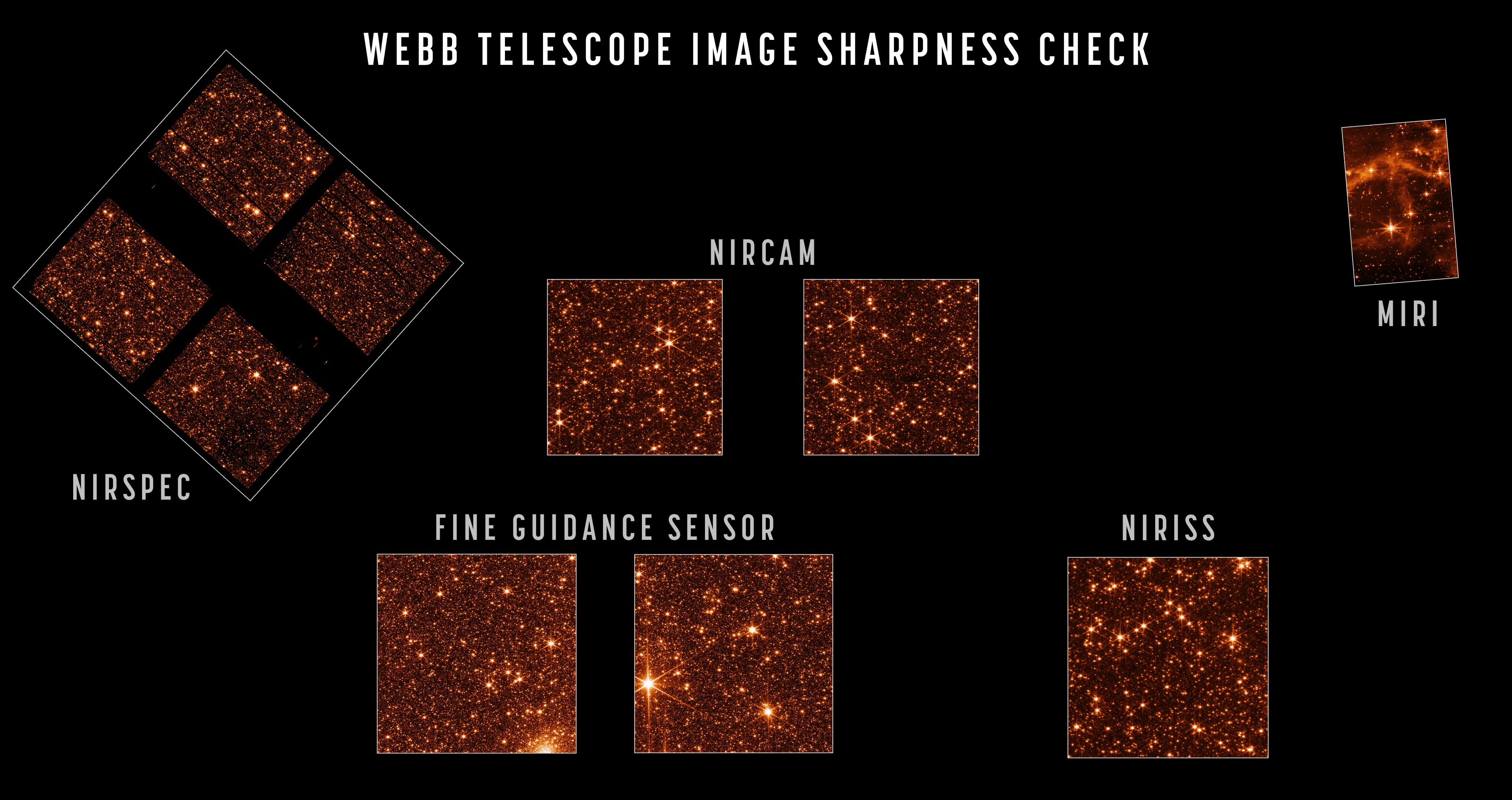
The JWST has finally completed its seventh and final alignment phase, confirming that all four instruments are aligned and focused on the telescope, allowing it to produce diffraction-limited images. The diffraction limit means that the resolution is as good as it can get for a telescope of that aperture.
Each of the instruments receives light from the telescope at the same time, allowing for simultaneous operations. According to the scientists, the telescope is now performing even better than they expected.
The next step, and the last one before producing science, is science instrument commissioning. This step is the conclusion of a quarter-century of work for some scientists, such as wavefront sensing and controls scientist Scott Acton, who said: These images have profoundly changed the way I see the universe. We are surrounded by a symphony of creation; there are galaxies everywhere! It is my hope that everyone in the world can see them.
This is another story where I again have to stipulate that I am not a biologist, so apologies if we trip over that aspect of the science at some point.

In a new paper published in Nature Communications and led by Yasuhiro Oba, scientists have revealed that the last two informational units of life’s building blocks – DNA and RNA – have finally been found in meteorites. This means that all five of those units have now been discovered in rocks that come from space.
The five components are nucleobases, which belong to classes of organic molecules and have a pretty big variety. And the last two bases – cytosine and thymine (the C and T of DNA pairs) – took this long to find because of their more delicate structures. Those structures may have degraded using previous the previous sampling technique, which, I have to admit, is kind of cool. And here I quote from the press release: In the earlier experiments, scientists created something of a “meteorite tea,” placing grains of meteorite in a hot bath to let the molecules on the sample extract into the solution and then analyzed the molecular makeup of the extraterrestrial broth.
The newer sampling technique used cool water extraction instead of hot formic acid, preventing the destruction of the more delicate molecules. And the instrumentation has improved, becoming more sensitive and able to find smaller amounts of the molecules.
Now, none of this means there is life on asteroids, and it doesn’t prove that asteroid impacts seeded life on Earth somehow. It does give scientists more molecules to use in lab experiments designed to understand just how life came about here on Earth. Co-author Jason Dworkin sums the work up thusly: This is adding more and more pieces; meteorites have been found to have sugars and bases now. It’s exciting to see progress in the making of the fundamental molecules of biology from space.
And maybe they can use this new technique on those samples due back from Bennu.
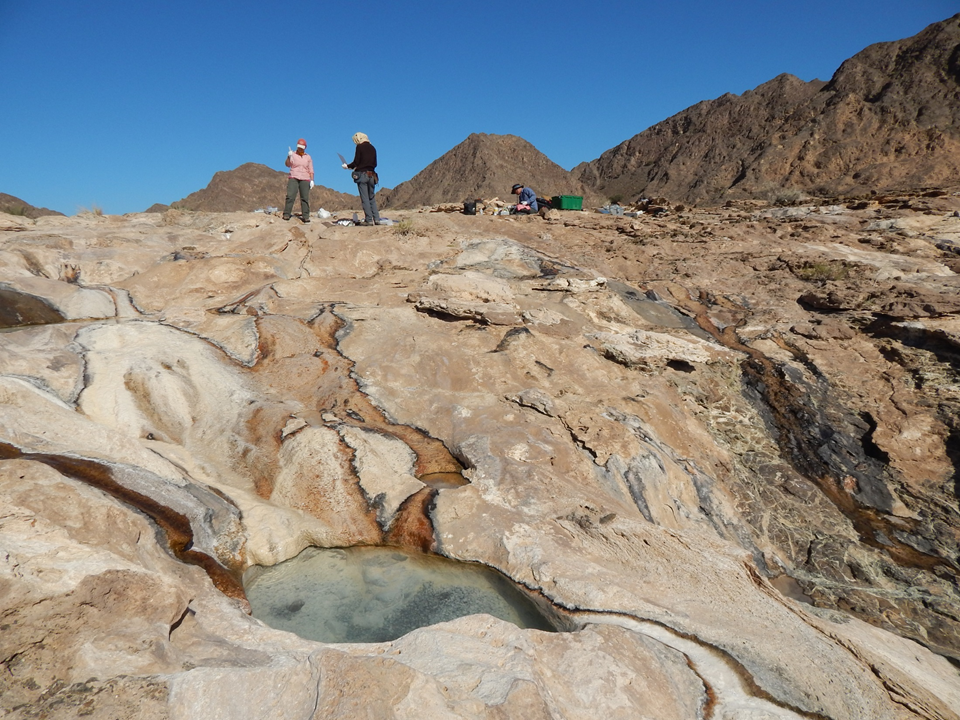
While space rocks are great for gathering all kinds of data about our solar system, they are also rather difficult to get your hands on. Sure, tons of space matter enters our atmosphere every day, but most of it burns up before it hits the ground, and if it doesn’t burn up, there’s a high probability that any surviving meteorites landed in the water. Or someplace equally difficult to get to. This is why scientists rely heavily on Earth analogs for research.
If we can understand how biology or geology works here on Earth, we can apply that to other worlds, at least in terms of possibilities and maybe probabilities.
Researchers recently analyzed rocks from the Persian Gulf near Oman in an effort to understand just where microorganisms called methanogens could exist. Their results were published in the journal JGR Biosciences with lead author Alta Howells, who examined rocks called ophiolites. These are rocks that once were part of an ancient seafloor and, at some point, reacted with water to produce hydrogen gas. The process is called serpentinization, and that gas can be used by microorganisms for energy.
The team wanted to find out what effect this process and these rocks could have on the biodiversity of any ecosystem hosted within. Why? Well, as Howells explains: It is believed that processes like serpentinization may exist throughout the universe, and evidence has been found that it may occur on Jupiter’s moon Europa and Saturn’s moon Enceladus.
Those icy worlds are key targets in the search for life beyond Earth.
Unfortunately, they discovered that not all of the ophiolite ecosystems could support methanogens, but that’s okay. Those rocks could host sulfate-consuming organisms instead. And the research also suggested that methanogens require more energy in these types of rocks as opposed to freshwater or marine sediments, possibly due to high pH levels.
It’s always good to add ideas to our toolbox when it comes to searching for life beyond Earth. Howells notes: If we can develop simple models with energy supply as a parameter to predict the occurrence and activity of life on Earth, we can deploy these models in the study of other ocean worlds.
Next up, we’ll look at how water on Earth may have become water on the Moon.
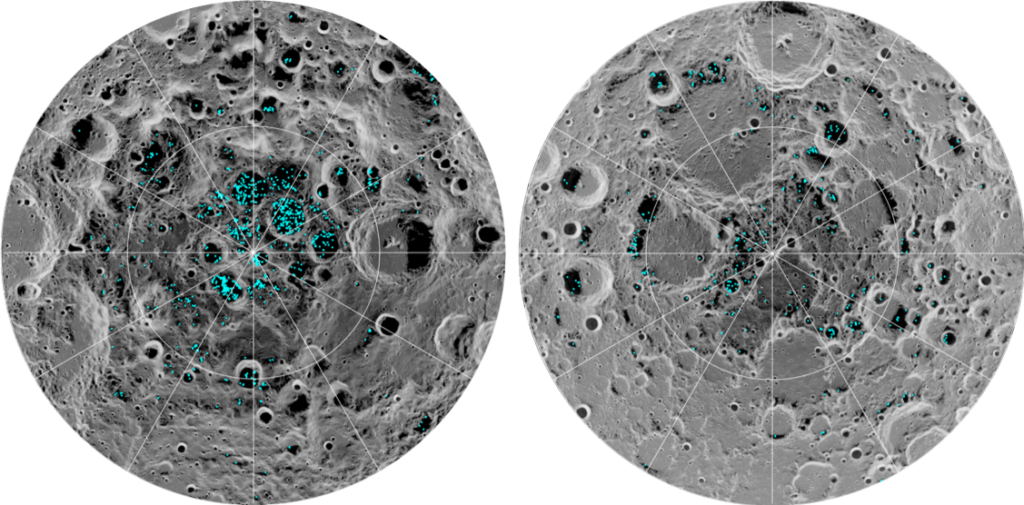
Science has long known that there is ice on the moon, and new research in the journal Scientific Reports shows where some of it came from the Earth’s atmosphere.
Now, most of the Moon’s ice came from the same source as that of Earth – comets and asteroids impacting the surface. According to the study, a minimum of 1% of the Earth’s atmosphere has escaped and been deposited on the Moon. This works out to 3,500 cubic kilometers of ice.
So how did all of this ice get from the Earth to the Moon? It’s a little complicated.
Hydrogen and oxygen ions – molecules with a net electrical charge – escape the atmosphere and follow broken magnetic field lines straight away from the Sun. These field lines often reconnect to form a closed loop around the Earth again.
At some point in the return portion of this thousands of kilometer journey, these hydrogen and oxygen ions smack into the Moon, which passes through the Earth’s magnetotail for five days of its orbit around Earth. The material forms permafrost in the shadowed portions of the lunar north and south pole and has since the end of the Late Heavy Bombardment. First author Gunther Kletetschka said: It is like the moon is in the shower — a shower of water ions coming back to Earth, falling on the moon’s surface.

One of the old favorites for folks looking to understand solar system formation is the star Beta Pictoris. This young star was discovered to have a disk of material around it in the late 1980s, and as our technology progressed, we found more and more cool stuff in this 20 million-year-old planetary system. In recent years, two gas giants were discovered in this system, and now, thanks to data from the TESS mission, individual comets have been seen as well.
I have to admit — I didn’t think we were quite to the point of making this kind of measurement, but last night I read the paper in Scientific Reports, which was led by Alain Lecavelier des Etangs, and I’m a believer.
Beta Pictoris is an edge-on system just over sixty light-years away, and the combination of a large central star and perfect alignment allows us to catch objects passing between us and the star with relative ease, including (just barely) the passage of comets.
In 156 days of observations with TESS, thirty different light dips were detected that are consistent with the passage of comets in front of this hot, A-type star. The depth and length of each dip in light, presumably caused by these comets circling Beta Pictoris, allowed rough sizes to be calculated. Remarkably, the scatter in sizes observed in Beta Pictoris’ comets is statistically similar to the distribution in our own solar system. This seems to reflect comets forming in the same way in that system as they formed in our system.
Now, for those of you asking, “But how do they know they are comets and not something else?” I’m with you. Star spots and other misbehaviors in stars can masquerade as transits. To prove something is a comet, you really want to be watching the star with a spectroscope so that the gases in the star can be measured as they are backlit by the star. And while all thirty presumed comets weren’t watched this way, there have been spectroscopic measurements of comet transits in the past. Here, past behavior is used to inform current interpretations, and the size distribution really makes sense for the answer being comets.
This paper could be proven wrong, but I think they’re right, and until we get even better systems in space, this is the data we have, and this discovery is kind of awesome.
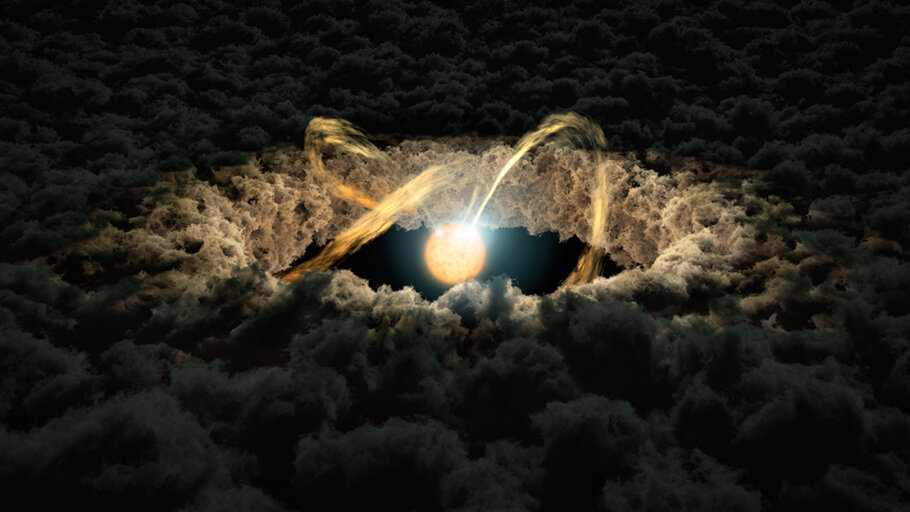
As good as we are getting at seeing young solar systems, there is so much we still don’t understand.
One of our greatest frustrations is our inability to fully understand how our own solar system formed coupled with our inability to resolve solar systems like ours orbiting distant stars. This system, with four small rocky worlds near the Sun and four, possibly five, gas giants is so far unlike anything else we’ve ever seen. The distribution of objects we see, along with their chemistries and crater histories, can largely be explained by the 2005 Nice Model, which was developed by a large collaboration of researchers who met in Nice, France.
It states, to radically oversimplify, that the gas giants started out in positions much much closer to the Sun, and after some sort of unnamed instability occurred, the gravitational effects of Saturn and Jupiter were a driving force in flinging Uranus and Neptune to the outer solar system. This model works best if a fifth gas giant is added, but the model predicts that the fifth gas giant, or ninth planet, would have been radically flung out of our solar system.
But the model isn’t perfect. The timeline for when all of this moving around took place puts the planet flinging hundreds of millions of years after the gas disk of our early solar system would have been dissipated by the Sun’s heat. This is both inconsistent with the chemistry of Moon rocks and what we are seeing in other solar systems.
Enter Beibei Liu, Sean N. Raymond & Seth A. Jacobson. In a new paper in Nature, these three scientists present detailed models that ask: Could the Sun’s destruction of the gas leftover in the early solar system have been the instability that caused the solar system’s rearrangement?
This one change moves the rearranging of the solar system to the first few tens of millions of years and makes what we see here consistent with other solar systems. That is excellent.
It also has an interesting change involving a possible fifth gas giant. In the Nice model, and here I quote a release from Michigan State: …that extra planet was hammer-thrown from our solar system during the instability.
If that’s true, Michael Brown’s ninth possible planet isn’t out there, unless it was stolen from another solar system.

In this revised model, the potential extra planet is not required in the same way but also isn’t flung away in the same way. So, more work is needed, more observations are needed, and hopefully, we are within a couple of years of knowing if our solar system has one more gas giant and being able to use that information to revise our understanding of the solar system.
Next up, Erik is back with a surprise Chinese Launch, and Beth brings us a review of one of the most heartwarming sci-fi movies so far this year.
On April 29 at 4:11 UTC, a Long March 2C launched the Siwei 1 and 2 satellites into orbit from the Jiuquan Satellite Launch Center in China. These two satellites are optical imaging satellites with a 50 centimeter per pixel resolution and were launched for a subsidiary of the state aerospace company CASC.
And now for that review.
Review
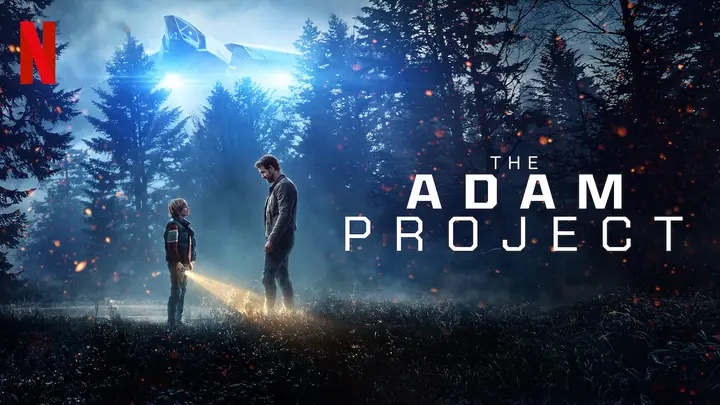
Before I get into my actual review, I would like to thank the two people that told me I should watch this movie, both of whom are my bosses. Being a mom is sometimes not an easy gig, and they both heard my frustration and concern that I am, well, not a good mom. They then, separately, recommended I watch The Adam Project, and since it stars Ryan Reynolds, I didn’t really find that a challenge. And it did help, so thank you, Pamela and Rebecca.
On to the movie.
The Adam Project is a science fiction, time travel movie, where the title character, Adam, goes back in time. The film opens with a space battle. Adam, it seems, has stolen his jet, and the people he stole it from want it back. He’s shot in the ensuing dogfight, but he manages to punch a wormhole through space-time and get through it before his ship is blown up.
Next up, we meet the younger Adam. He’s about to get his butt handed to him by a bully, but he cannot help himself and keeps making sarcastic remarks at the bully and his friend. This doesn’t help his situation any, and here we see that younger Adam is a geeky, smart, asthmatic, and not physically inclined twelve-year-old kid. It’s not easy to see the older version in the younger, and that right off is intriguing.
Obviously, older Adam runs into younger Adam at home later on, and it doesn’t take long for the younger to figure out that they are the same person. There is a lot of sniping and poking at each other, which is kind of endearing and funny. It’s kind of how I expect any of Ryan’s children to turn out, to be honest.
Behind all of the delightful banter, time-traveling Adam is dealing with his bullet wound and navigating just how much to explain to his younger self. This is where the science fiction plot comes into play. Adam is trying to rescue someone from a nefarious plot to control the future. And from there, it would get spoilery, so now let’s talk about what I liked and why, as well as some of the science stuff.
First off, the movie is funny in a charming way, as I would expect from a Ryan Reynolds/Shawn Levy movie. This is the same duo that brought us Free Guy, after all. Second, the script hits a lot of great notes, finding emotional moments in what could have just been a popcorn movie, full of great action sequences and no heart. The action sequences, though, are really good. But in the midst of all of that is a story about grief and family and love. It’s lovely.
So why did my two bosses recommend the movie in the midst of my parental breakdown? There is this one really touching scene between older Adam and his mom, played by Jennifer Garner, where he seeks to reassure her about how good a mother she is and that her kid loves her. She doesn’t know who this person is being nice to her over the bar in a pub, but Garner does a great job of letting the fear and wonder and gratitude play over her face. I needed that moment.
As for the science in this movie, there’s actually quite a bit of it. Of course, time travel is the main topic, and I’m not going to get into that too much, although I did like the way they handled the issue of causation and paradoxes. But the part that really hit home was a graduate physics teacher talking in their lecture about how these are the problems their children will solve. And the way the students were reacting about the impossibility of making it even that far. Physics, as I know all too well, is not easy. Also, they touch on the phrase “It’s later than you think”, referring to how there is never enough time to do all the things in your life, so do them sooner rather than later. I liked how that tied nicely into the time travel theme, as well.
So, overall, a bit of science, a lot of action, but, most importantly, a ton of heart makes The Adam Project a delightful movie. It was produced by and is available on Netflix if any of you are still subscribed to that particular service. Please note that we received no compensation for this review.
This has been the Daily Space.
You can find more information on all our stories, including images, at DailySpace.org. As always, we’re here thanks to the donations of people like you. If you like our content, please consider joining our Patreon at Patreon.com/CosmoQuestX.
Credits
Written by Pamela Gay, Beth Johnson, Erik Madaus, and Gordon Dewis
Hosted by Pamela Gay, Beth Johnson, and Erik Madaus
Audio and Video Editing by Ally Pelphrey
Content Editing by Beth Johnson
Intro and Outro music by Kevin MacLeod, https://incompetech.com/music/


 We record most shows live, on Twitch. Follow us today to get alerts when we go live.
We record most shows live, on Twitch. Follow us today to get alerts when we go live.